Editor’s Note: This reporting was made possible by a CARE learning tour to Guatemala.
Story highlights
Half of the children younger than 5 in Guatemala suffer from stunting because of malnutrition
Stunting affects growth, brain development and immunity
Chronic malnutrition during the first 1,000 days of a child's life can cause irreversible damage
The little boy shyly peeks out from behind his mother’s skirt. He and his parents are standing, barefoot in the dirt, outside their house made of tin. His family’s poverty is apparent, but its toll on his health isn’t immediately obvious. Three-year-old Hector suffers from what some call an “invisible” problem.
Like half of all children younger than 5 in Guatemala, he is stunted from chronic malnutrition. Stunted children may appear normal, but their height is significantly below average.
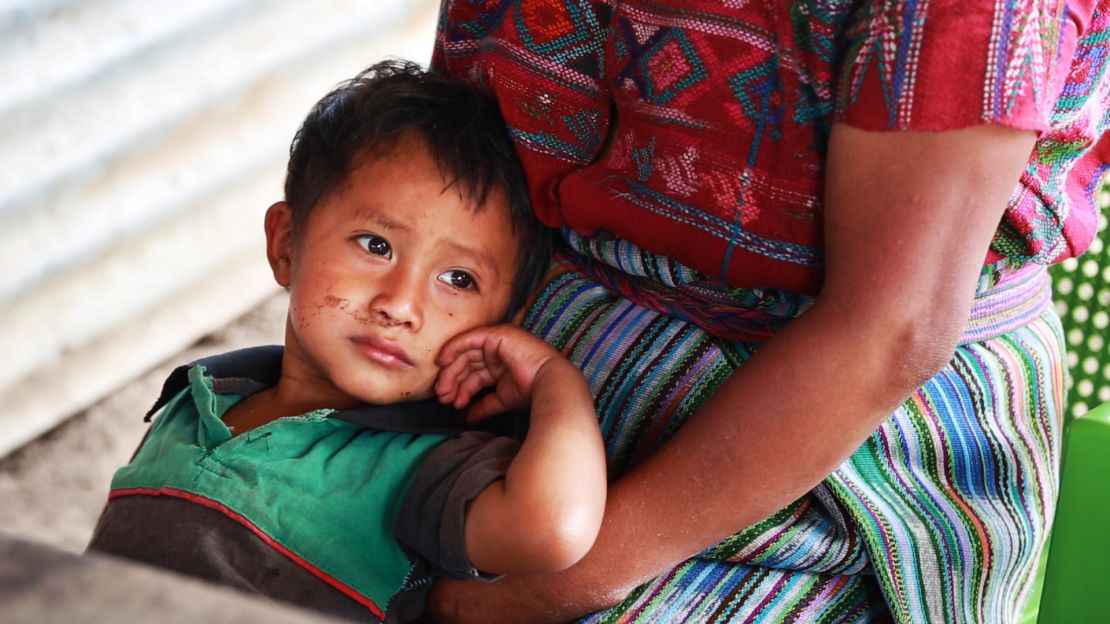
But even more sinister consequences are hidden from view. Stunting affects brain development and the ability to learn, making children more likely to drop out of school and decreasing future job prospects. It also weakens the immune system, which can lead to recurring bouts of illness.
Guatemala is suffering from a crisis of chronic malnutrition, especially in indigenous Mayan communities where seven out of 10 children are stunted. According to the World Food Programme, the country has the fourth-highest rate of chronic malnutrition in the world.
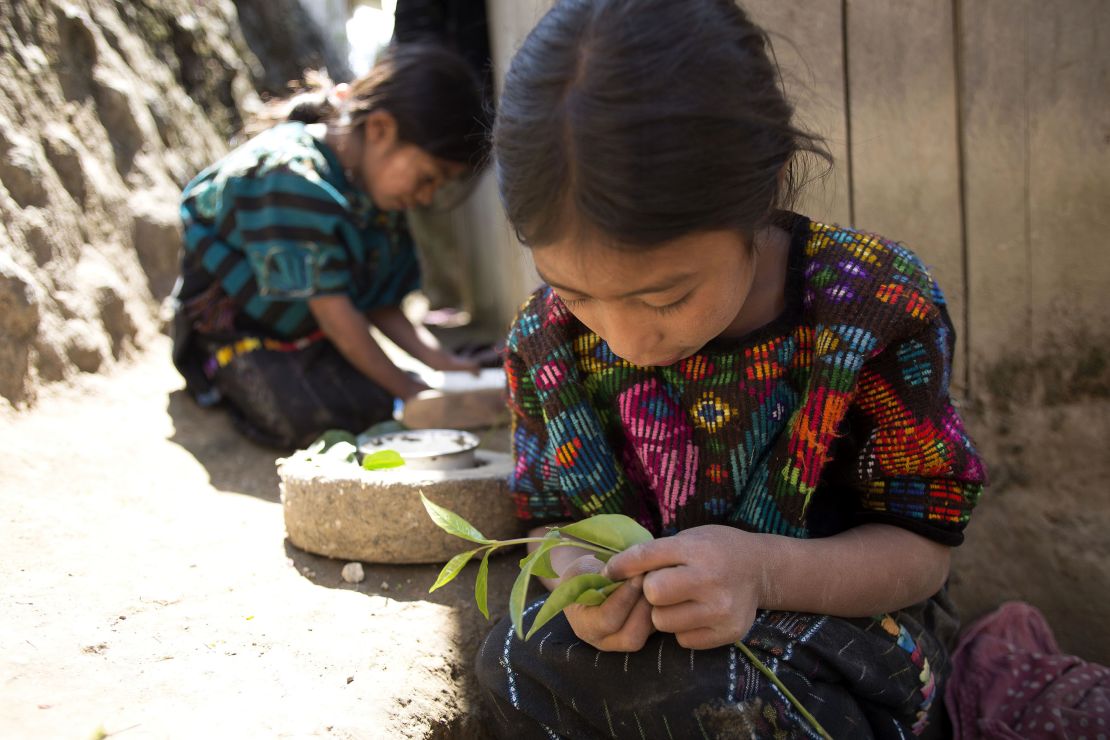
Many people in the United States may be surprised that it’s happening virtually right in their backyard. They may associate malnutrition with the gaunt faces and emaciated bodies of starving children in Africa and other areas hit by famine.
That type of malnutrition is considered acute and can be life threatening. But food shortages aren’t the main problem in Guatemala. Many children are getting enough to eat, but their food lacks the necessary nutrients.
Even though the country produces an abundance of fruits and vegetables, many crops are exported or destined for urban markets, never ending up on the tables of impoverished rural families. Their traditional staples of corn, tortillas and beans may ward off hunger but not malnutrition.
Roots of crisis run deep
Much of Guatemala’s lush, fertile land is concentrated in the hands of a few, helping explain why the country has one of the world’s worst rates of income inequality. Half of all Guatemalans live in poverty, with the number soaring to 70% and higher in indigenous areas.
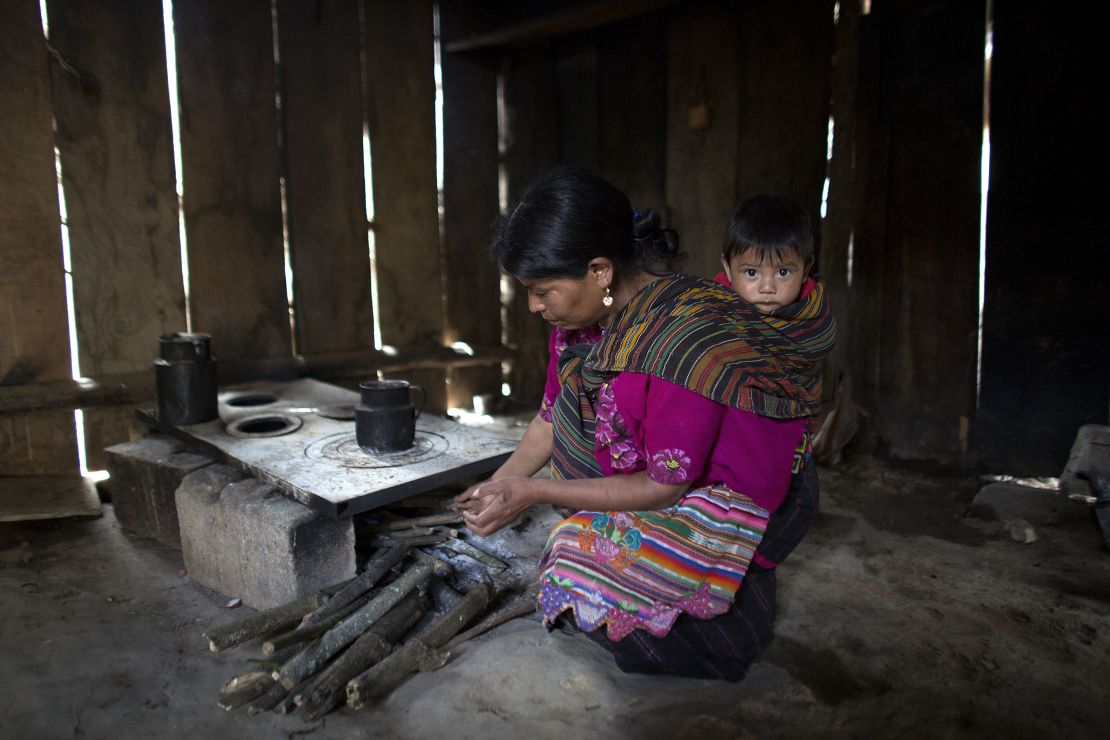
Indigenous Mayans have been marginalized and deprived of land since the Spanish conquest in the 1500s. Centuries of repression took an even darker turn during the civil war that began in 1960. The United Nations says 83% of the 200,000 people killed were Mayans. Nearly two decades after peace accords ended the conflict, many indigenous communities remain isolated in pockets of deep poverty.
These communities also often lack infrastructure critical to preventing stunting, including access to safe drinking water. Contaminated water can cause gastrointestinal infections that prevent the body from absorbing nutrients.
A high rate of early marriage is also a factor. The Population Council says more than half of all girls in rural Guatemala become brides by 18. Many begin having children when they are still children themselves. These babies have an increased risk of malnutrition compared with children of older mothers.
Just as the causes of stunting are multifaceted, so are the solutions.
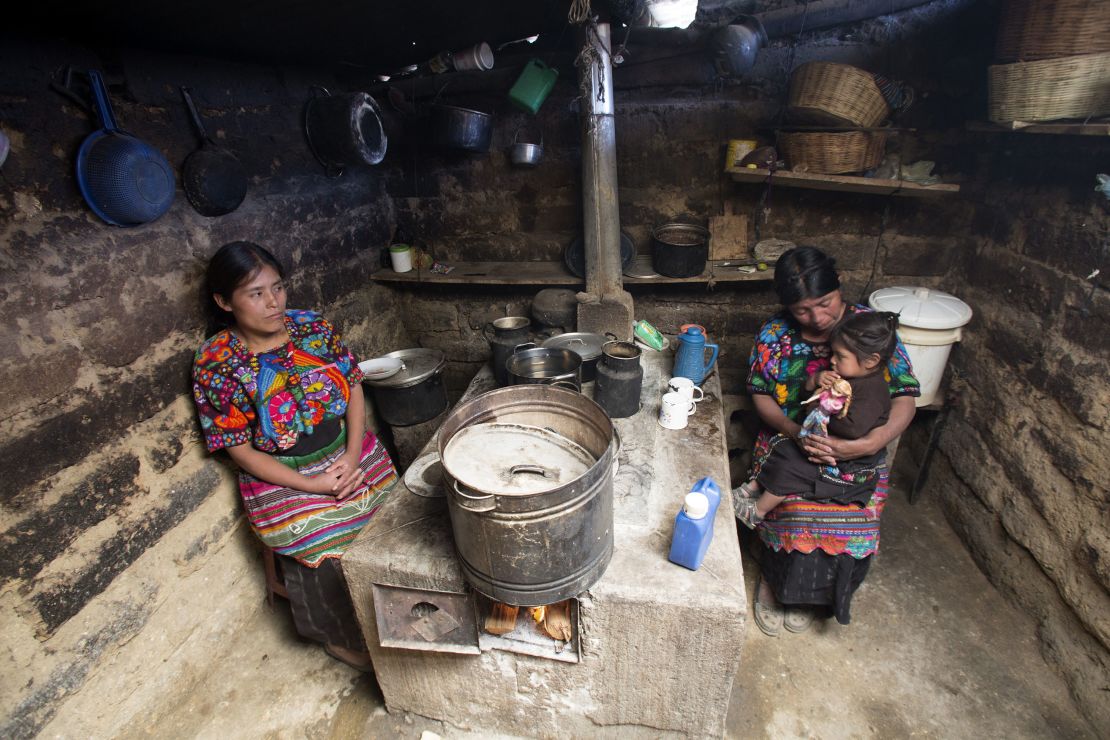
“We know what to do to prevent it,” says Kelly Saldaña, deputy director of USAID’s Office of Health, Infectious Diseases and Nutrition. “That doesn’t make it easy.”
Saldaña says with so many factors involved, prevention efforts are prioritized by what will have the biggest impact. While problems such as poverty can’t be solved overnight, there are steps that can help children right now if they come within a critical window of opportunity.
1,000 days: A window of opportunity
Experts agree that intervention is most effective during a period known as “1,000 days.”
“It starts when a woman conceives and goes through a child’s second birthday,” explains Saldaña. “It’s a critical period for cognitive development, where nutritional status is very important to future outcomes.”
If chronic malnutrition occurs during that time frame, the damage is largely irreversible. Two-year-old children with their entire lives ahead of them might suffer permanent impairment. Christian Skoog, UNICEF’s representative in Guatemala, calls the consequences a “life sentence.”
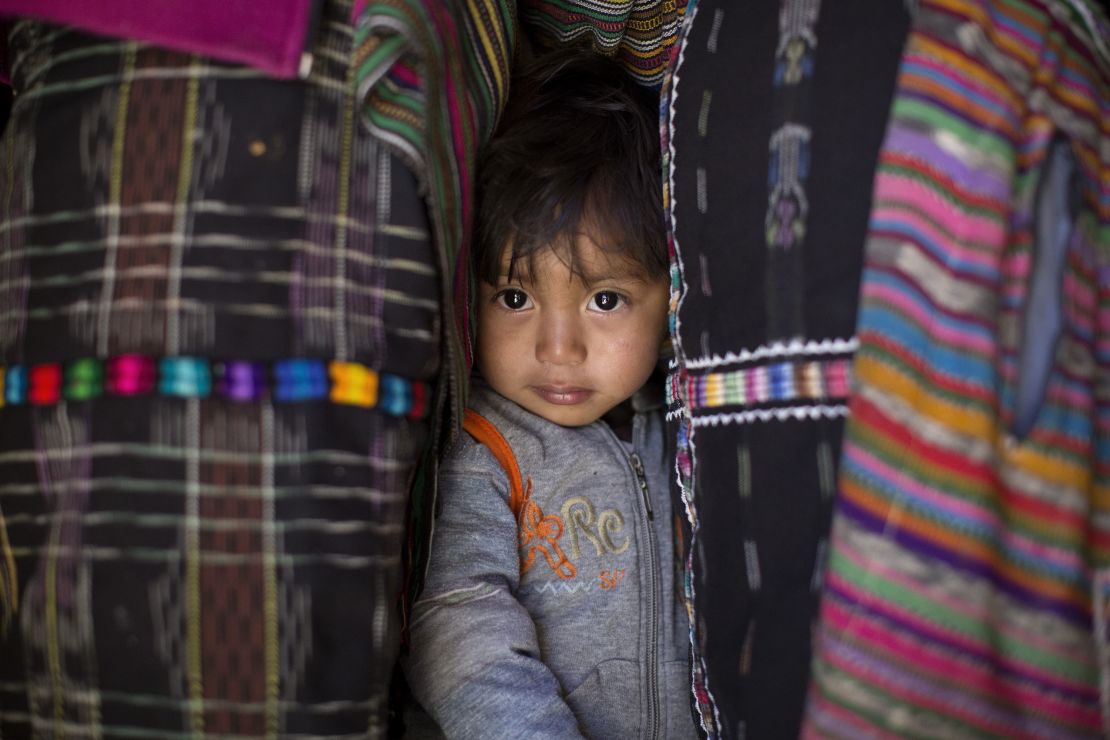
The government of President Otto Pérez Molina has put a priority on the 1,000 days strategy. It’s a key part of an initiative called the “Zero Hunger Pact” that aims to reduce malnutrition.
It’s targeting municipalities most at risk, but the need vastly outstrips resources.
With lives at stake, the crisis can’t wait. That’s where aid groups step in.
Promoting healthy pregnancies
Juanita Tzunún is speaking animatedly in K’iche’, one of almost two dozen Mayan dialects in Guatemala. “When a woman is pregnant, she has to take care of herself,” she says. “She should not carry heavy things, and she has to eat five times a day, three full meals and two snacks, so that her baby is born with a good weight.”
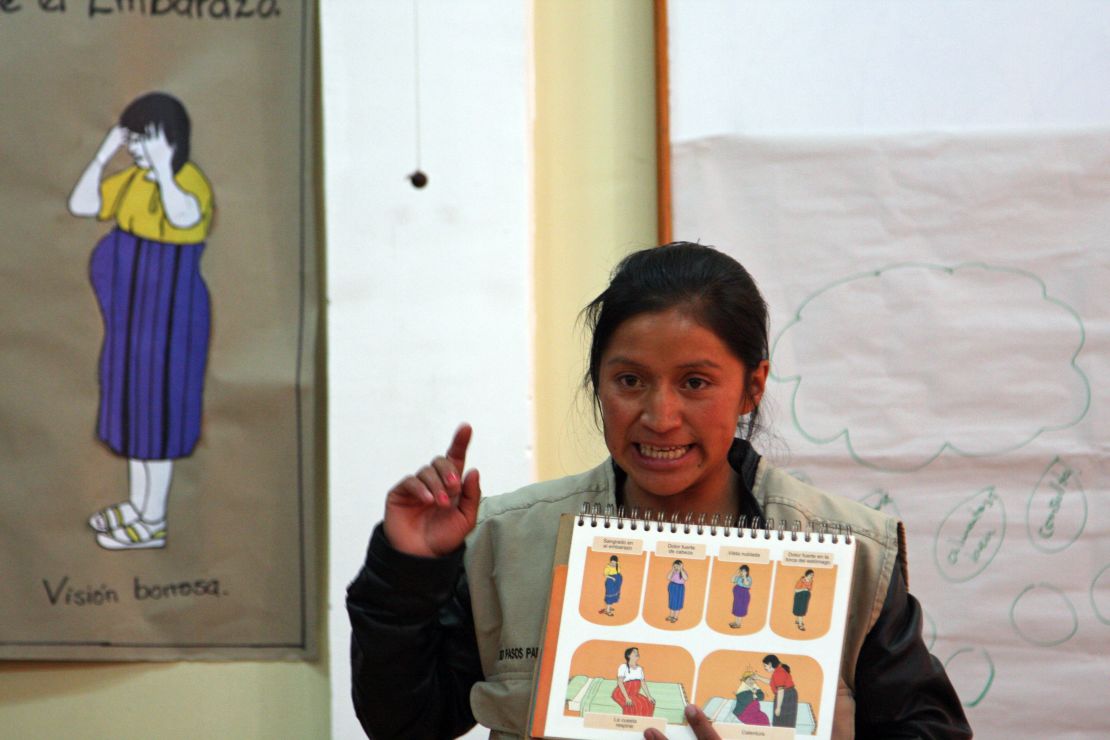
The auxiliary nurse is holding an illustrated chart that shows danger signs that can appear during pregnancy. She’s talking to a group of indigenous women gathered in Quetzaltenango, explaining which symptoms require a clinic checkup and which require urgent care.
Tzunún and other nurses play a key role in “Three Steps to Health,” a program run by the humanitarian organization CARE. They educate indigenous women chosen by their communities as “health promoters” on the basics of maternal and child health. These women then spread the information within their villages.
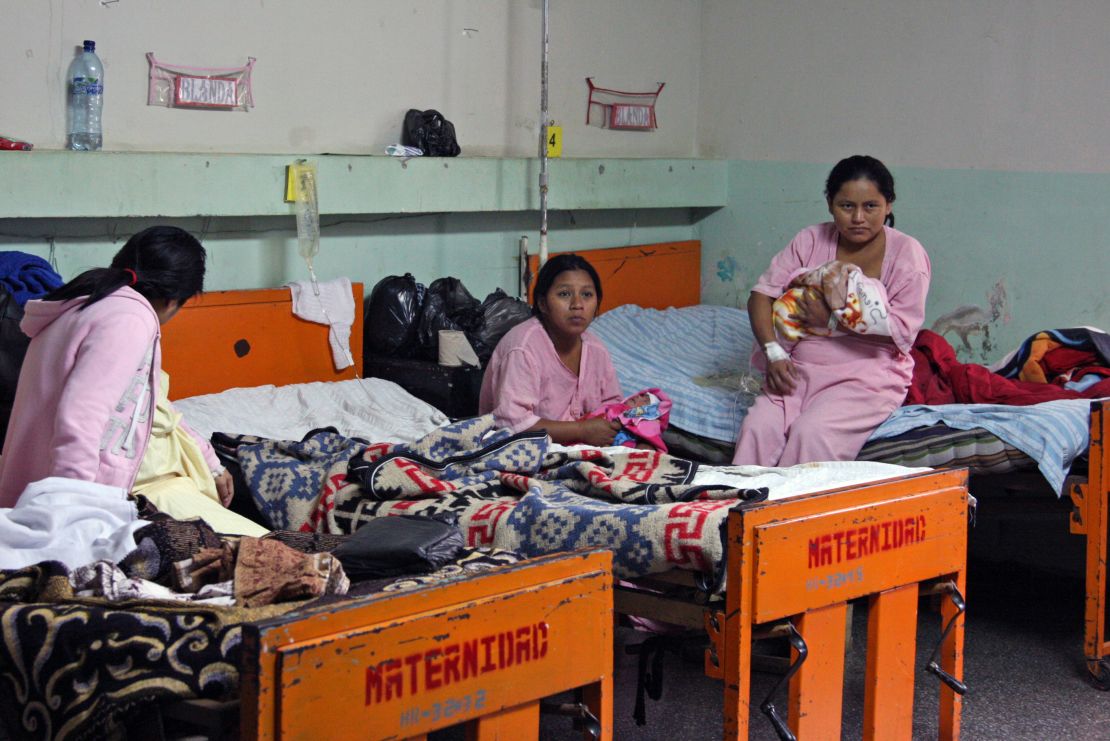
The program and others like it are crucial links between mothers and health facilities. Many rural Guatemalan women have limited access to health care. The nearest hospital is often far away, and transportation – even a bus ticket – can be prohibitively expensive.
Detecting problems early
Mauricia, 18, is one of the mothers who gets house calls. She’s sitting on her bed in the village of Tizate, holding her baby wrapped in a blanket. He’s just 3 weeks old and doesn’t even have a name yet, but health workers are already monitoring his growth.
Speaking in the local Mam dialect, Mauricia tells an auxiliary nurse that she won’t give her baby any water or atol, a drink made from corn. She’s exclusively breastfeeding for six months, one of the most critical steps in preventing child stunting.
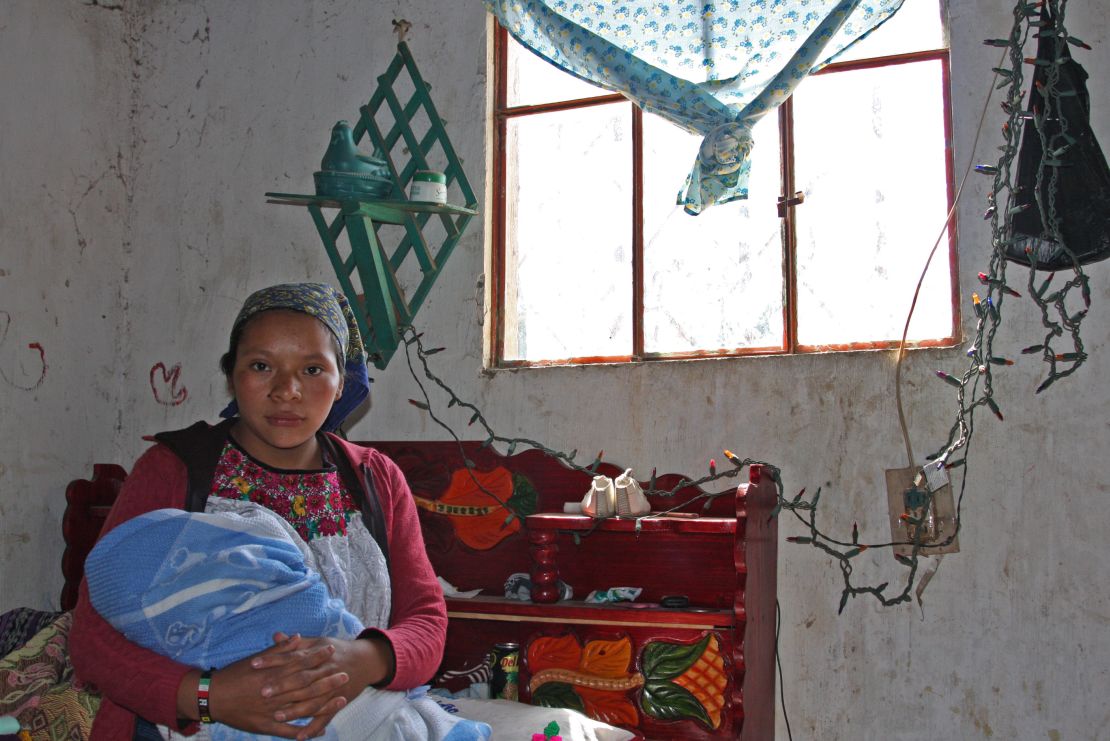
Mauricia received vitamins and supplements during her pregnancy, as well as counseling on how to care for her newborn, from Nutri-Salud, one of USAID’s programs that support the Guatemalan Ministry of Health. The assistance is critical in this village, where mothers traditionally give birth at home with a midwife and have very limited schooling.
Health workers use a poster of a giant wheel with illustrations to make sure Mauricia is following recommended steps during the 1,000 day period. They also help chart the baby’s growth in a government-issued booklet. Early detection of a problem is critical.
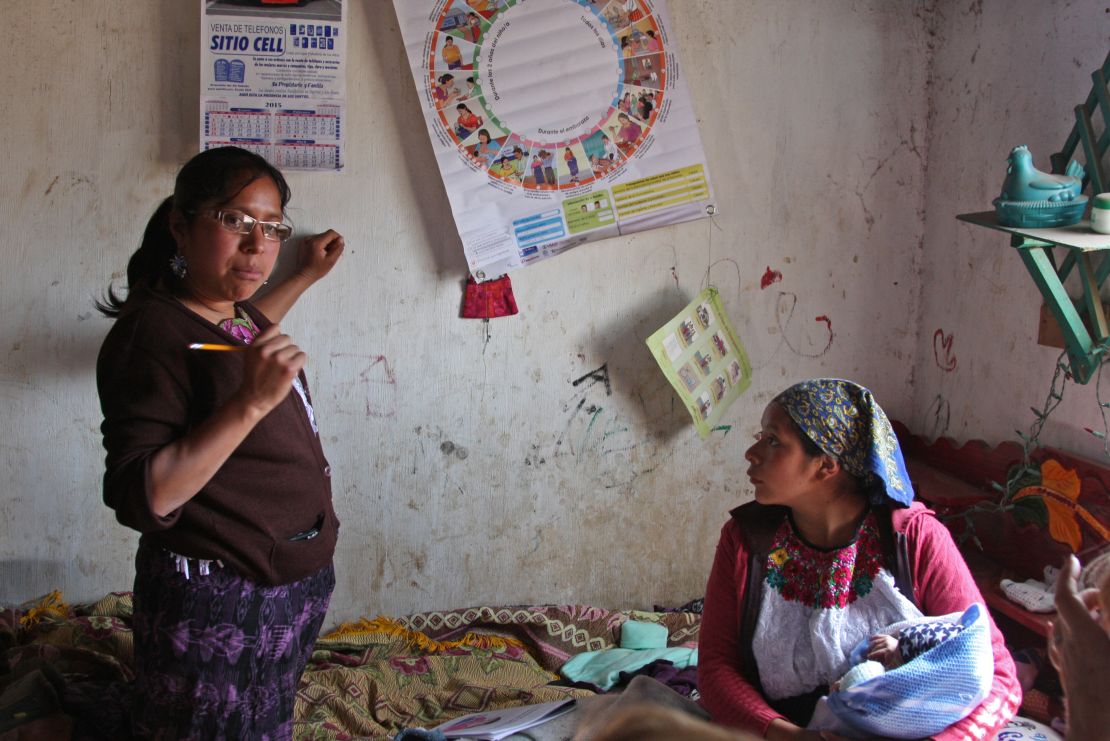
“Even if the baby is in the normal zone, the minute the curve drops even one little bit, we know something’s gone amiss,” says Patricia O’Connor, director of USAID’s Nutri-Salud. “So we intervene early before the child becomes malnourished.”
The program also offers advice on improving sanitation and hygiene, including hand washing and covering latrines. All play a critical role in preventing chronic malnutrition.
“It’s not just the result of not eating well,” says O’Connor. “It has to do with the environment in which families are living, with access to clean water, and with staying healthy. Sick children can’t absorb nutrients.”
Encouraging healthier choices
Education about the value of nutritious food is also key to breaking the cycle of chronic malnutrition. Poor diets are common even in some farming communities such as Hector’s hometown of Estancia de la Virgen.
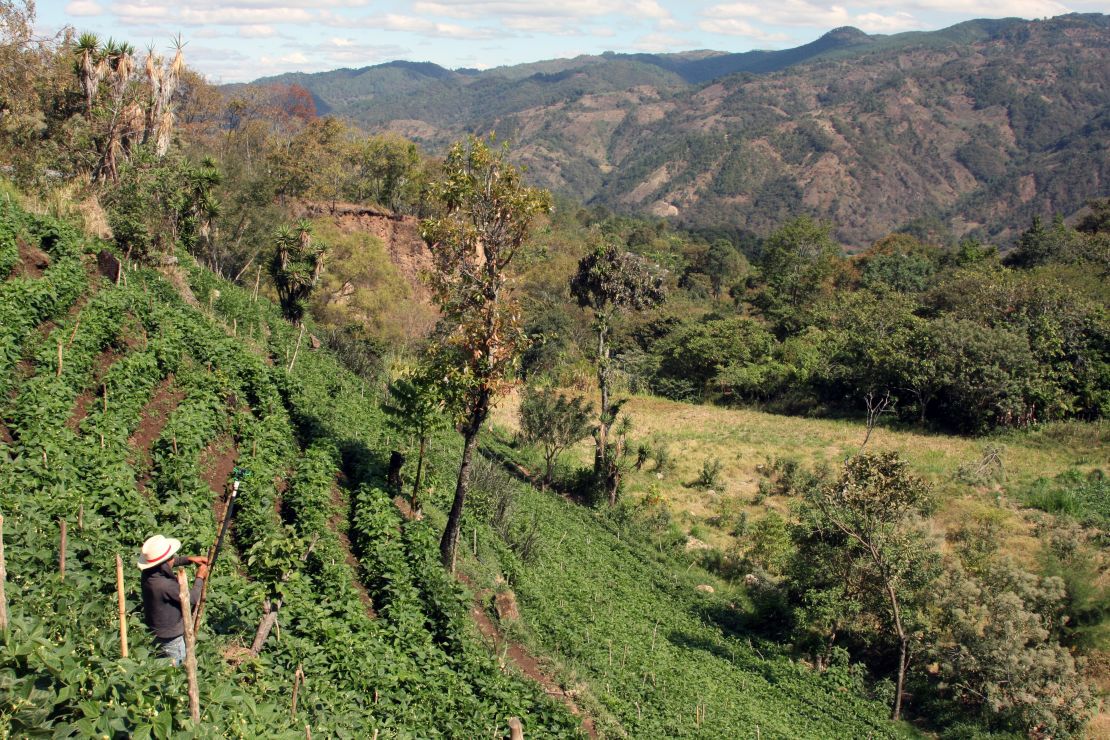
Haroldo Chiquín says many smallholder farmers consider their crops too valuable to keep for themselves, so they sell them all at market. The CARE coordinator works with a program that encourages farmers to save 20% of what they produce for their own families.
But Chiquín says the lure of packaged foods is also a problem, especially a ramen noodle-like product. “Children are eating ready-made Chinese soup sold in stores,” he says. Sugary cereals and snacks are also in high demand.
CARE is supporting a government initiative to train teachers how to educate children about proper nutrition. Adelfo Xalin Leon is putting it into practice with his third-grade class.
“What is food security?” he asks his students. “Not just having something in our stomachs, but something that gives us nutrients.” The children play a game similar to Bingo to learn the difference between healthful foods and those with empty calories.
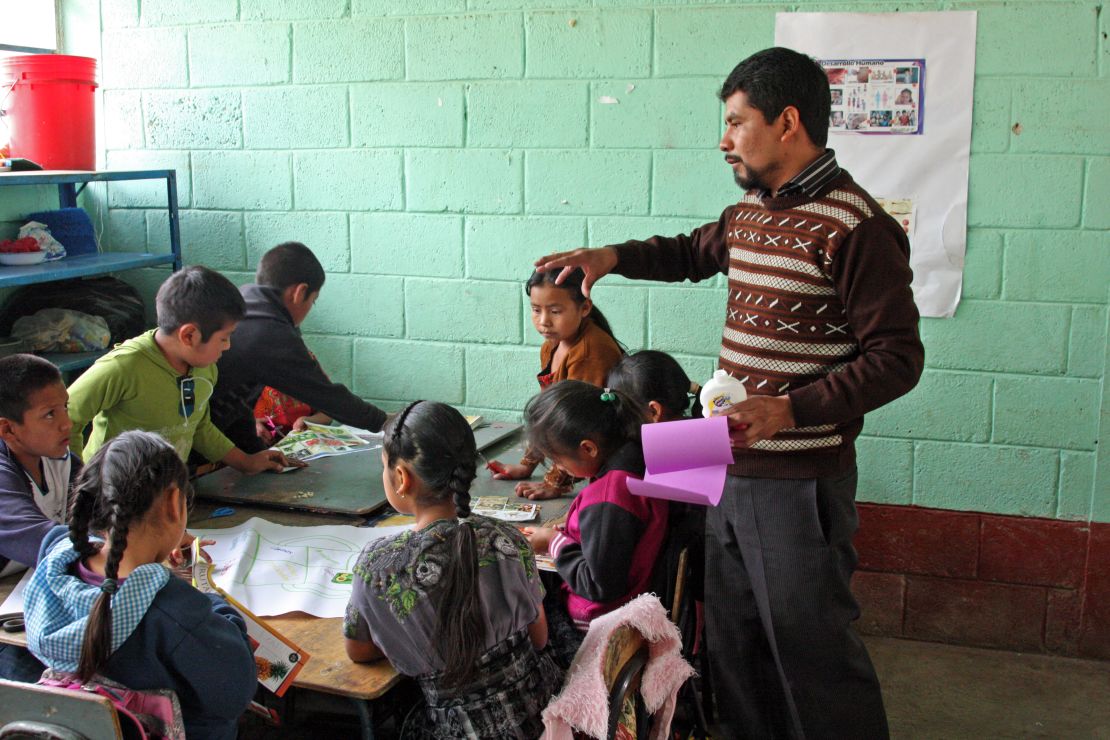
Next door, second-grade students are shopping in a “market,” learning how to bypass colas and packaged snacks and purchase local fruits and vegetables instead.
One girl sits alone at her desk while the others load up baskets with fruit and fresh greens. When asked why she’s not taking part, she says she doesn’t have any “money.” It’s not clear what happened to hers, but the teacher is alerted and gives her some bills. The girl smiles and jumps up to join the other shoppers.
It’s only fake money, of course. But it symbolizes the all-too-real problem for many Guatemalan families. Leon says, “We can tell (the children) what they should be eating, but we don’t have control over their economic resources. That’s a factor which will make the difference between good and bad nutrition.”

Entire country paying the price
That gets back to the heart of the crisis. The communities most affected by stunting are the ones mired deepest in poverty, lacking the means to purchase or grow enough healthful foods.
But make no mistake – the entire country is paying the price. CARE says malnutrition costs Guatemala more than $3 billion every year, much of that from lost productivity.
What if all of that human capital were nourished and able to fully contribute to society? What if the untapped potential of millions of children were unleashed?
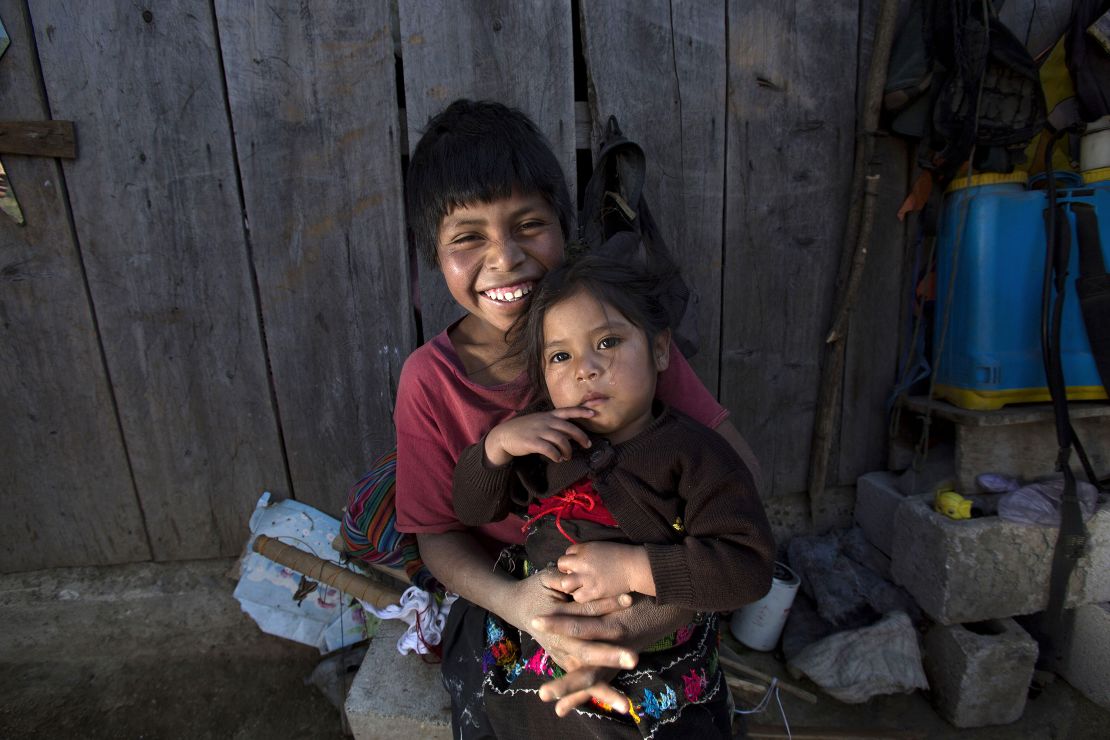
Preventing stunting and chronic malnutrition makes clear economic sense. But this crisis isn’t as much about numbers as it is human lives.
Children are being robbed of the ability to fully develop their talents and to realize their dreams. They’re being sentenced to a lifetime of problems by their second birthday, their potentially bright futures needlessly destined for the shadows.
Aid groups are helping children get a healthy start to life. But they need our immediate help to reach all of those at risk. Each day that goes by, more children slip out of reach of that critical window of opportunity.
















